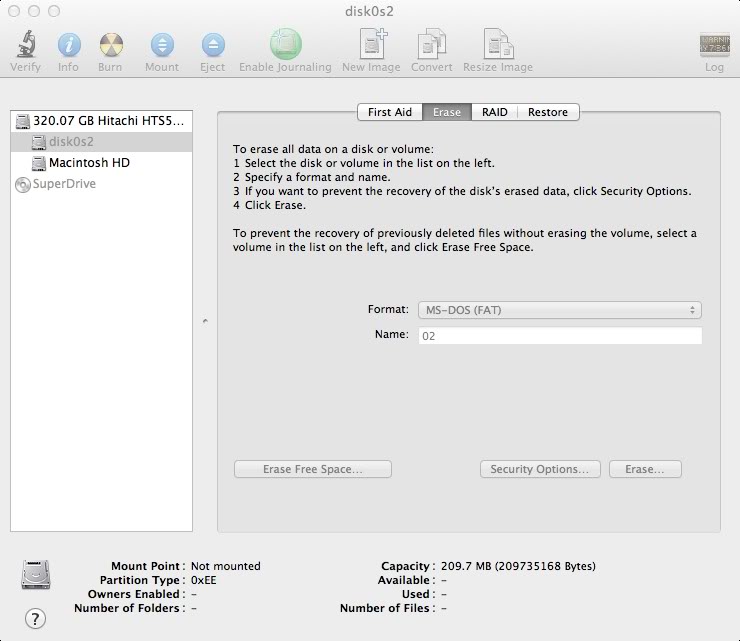Ntfs Utility For Mac
This answer explains how to format a drive in the exFAT or FAT32 file system. This allows the drive to be used on both Windows and macOS.*END A Western Digital external hard drive can be used on both Windows and Mac OSX. This is useful if a drive is being used under both to move files between the two environments.
Most WD Drives come formatted in the NTFS (Windows) or HFS+ (Mac) format. For a hard drive to be able to be read and written to in both a PC and Mac computer, it must be formatted to or file format. FAT32 has several limitations, including a 4 GB per-file limit. This is a file system limitation that affects both Mac's and PC's, and the only workaround is to format the drive to exFAT.
For more information about what these limitations are please see. The easiest way to format the drive to or is by using macOS's built-in Disk Utility or Windows' built-in Disk Management. Critical: Never attempt to connect any external drive to multiple computers at the same time. This could quickly damage the drive's partition and corrupt the data on the drive. ExFAT in macOS 10.11 (El Capitan) and above There are two easy ways to format a drive to use is by using Mac OSX's built-in Disk Utility; using Erase (Step 4) or Partition (Step 7). For instructions on how to do this, please see the instructions below: • Connect the WD drive to the Mac computer.
Oct 02, 2013 Mac OS X has always been able to read NTFS drives, but tucked away in Mac OS X is a hidden option to enable write support to drives formatted as NTFS (NTFS stands for New Technology File System and is a proprietary file system format for Microsoft Windows).
• Double left-click on the Mac HD, the internal Mac hard drive visible on the top-right corner of the desktop screen. Choose Applications from the left-side panel. While in there, open Utilities, and lastly double-click on Disk Utility. • Disk Utility will now be open. In the left-side pane, choose the drive that is to be partitioned and formatted. Typically there are two listings for each drive unless more than one partition exists on a particular drive.
Download Hp Utility For Mac
Choose the drive listing that is farthest to the left for the drive that will be formatted. It is usually directly above the name of the drive. In the example below, the one to be selected would be WD My Passport 07BA Media.
Erase• After selecting the appropriate drive, additional options will become available on the top part of the Disk Utility window. Click on Erase. • The Erase window will now appear. Assign the name that will be given to the drive, and click on Erase. • When the Erasing process is completed, click on Done. Partition• Click on Partition on the top menu of the Disk Utility window. • The Partition window will now appear.
Download Airport Utility For Mac
Customize title bar windows 10. Click next to Format to display a drop-down menu, and select exFAT. This is the format that the drive will be formatted to. • Confirm that the name of the drive is correct in the Partition area, and update it if necessary. When ready, click Apply.

• Disk Utility will begin the formatting and repartitioning process. This may take several minutes. Note: If an error message is received stating that the drive is unable to be unmounted, this means that there is a program or service currently reading or writing data on the drive. Determine what program is accessing the drive and shut it down before trying to format the drive again. What app need for amazon video for mac. If the error message persists, restarting the computer may resolve the issue. If additional assistance is required, please.
Hp Utility For Mac
• When finished, the drive will be formatted and repartitioned successfully. Click on Done. ExFAT in macOS 10.10 (Yosemite) and earlier One of the easiest ways to format a drive to use is by using Mac OSX's built-in Disk Utility. For instructions on how to do this, please see the instructions below: • Begin by connecting the WD drive to the Mac computer. • Once the drive appears on the desktop, click on Go on the top tool bar. From the drop-down menu, click on Utilities. • In Utilities, select and open Disk Utility.
• When Disk Utility opens, select the drive that is to be partitioned and formatted from the left-side panel. Typically there are two listings for each drive, unless there is more than one partition on a particular drive. Choose the drive listing that is farthest to the left for the drive that will be formatted. It is usually directly above the name of the drive, and is the drive selection that has the total size being displayed. Once selected, click on Partition on the right-side area.
• In the Partition area, click under Partition Layout and select 1 Partition. Then, click on Options.
• In the Options window select Master Boot Record and then click Ok. • To the right, insert a name for the drive, and click on Format.
From the drop-down, select ExFAT. When done, click on Apply.